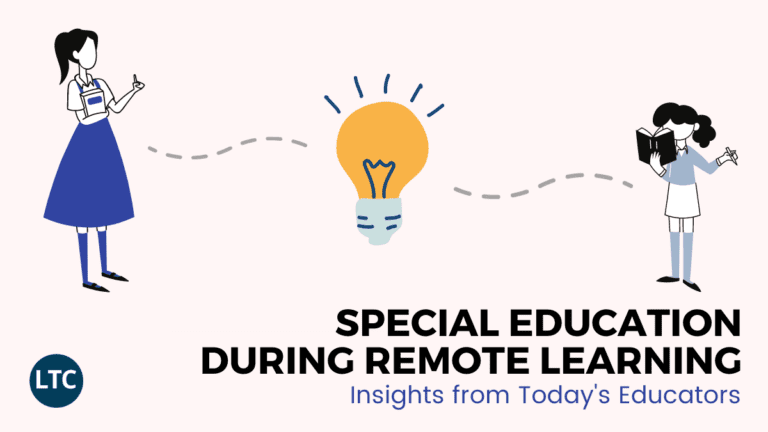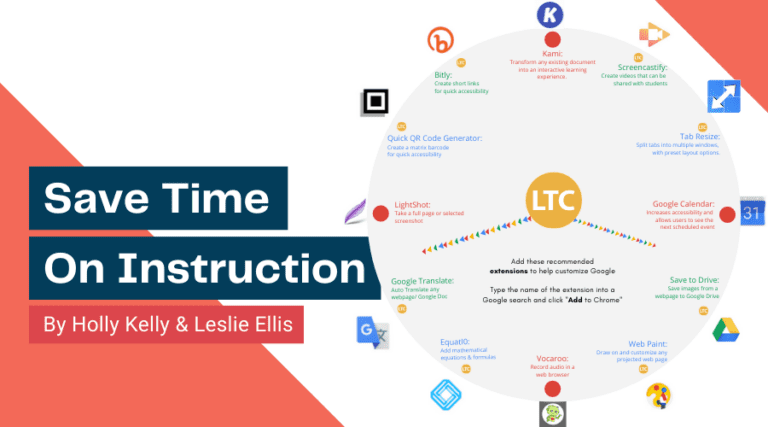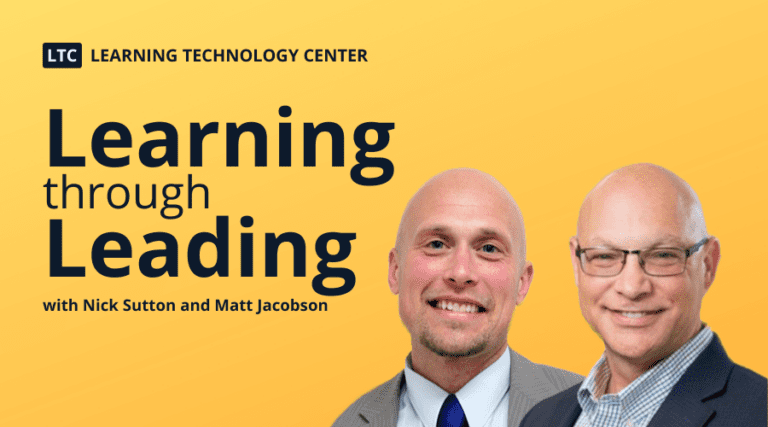Around this time last year, the education landscape across the US and around the world was on the precipice of a major change. For the first time ever, the majority of education instruction was provided online to keep students and teachers safe during an unprecedented health crisis.
Since then, educators, administrators, IT professionals, and technology coaches have worked hard, day in and day out, to make remote and hybrid learning accessible and productive for all students. This has led to numerous successes that may foreshadow new opportunities for digital learning once the current pandemic has passed.
To put it simply, the nature of digital learning has changed markedly over the past year. However, those changes have looked different for every stakeholder in the education equation. Now, as schools begin the shift back toward in-person instruction, there’s a real chance to reflect on those changes and see if they can inform digital learning planning and implementation in the future.
In celebration of Digital Learning Day 2021, the Learning Technology Center (LTC) team has spoken with education stakeholders from across Illinois to learn about their current views on digital learning. Their insights are a thoughtful peak into the lived experience of working in education over the past year, and the many ways digital learning continues to adapt to evolving student needs.
The Many Sides of Digital Learning
As folks in the education field have learned over the past year, “digital learning” isn’t any one app, piece of hardware, or lesson type. Instead, digital learning can take on numerous forms, each geared toward making educational content more accessible, engaging, and relevant to students of all ages.
To learn more about these many interpretations of digital learning, we asked educational stakeholders around Illinois what digital learning meant to them personally. Their responses were diverse and varied, giving further credence to the idea that digital learning, as a concept, is more than just using electronic devices to carry out instruction.
“Digital learning…is about promoting creation, collaboration, and critical thinking,” said Mia Gutsell, an Instructional Technology Specialist at Bensenville School District #2, “not simply the consumption of ideas.”
Carol L. Kilver, Superintendent for Pikeland CUSD #10, agreed with this perspective and emphasized the kinds of soft skills students can learn while engaging with digital learning resources.
“For me, it is about creating ‘self-directed’ learners,” Kilver explained, “Learners who can determine which tools help them gain what they need to understand.”
“Adaptability would also be key to my definition,” Kilver added, echoing the belief that digital learning must always be flexible, both in terms of how it is implemented and how it fulfils individual student’s learning needs.
Renee Bogacz, an Instructional Technology Resource Teacher with Channahon School District #17, also points out that educators cannot always count on traditional teaching methods when it comes time for digital instruction.
“It is not possible to create an engaging learning experience if you just ‘transfer’ school from the classroom to an online meeting,” Bogacz emphasized while discussing remote learning environments, “Teachers need to discover new ways to engage students, and students need to be shown how to take charge of their own learning.”
Digital Learning in Flux
Since spring 2020, students and parents have become accustomed to change. For many, a temporary shift to remote instruction became more permanent over time, while other schools moved between in-person and hybrid instruction as local health and safety standards changed.
Educators and support staff have similarly felt this flux over the past year, with many emphasizing the challenges of rolling with each week’s new punches. But even so, several Illinois administrators were quick to point out that these swift changes made it possible to unlock new avenues for engaging students.
“As difficult as the last year has been, one of the positives is that we have used technology in ways that we only dreamed about before,” Steve Wilder, Superintendent of Sycamore CUSD #427, praised, “’necessity is the mother of invention’ and the pandemic has given us the opportunity to try things we’ve never done before. Educators have always been creative problem-solvers, but the last year has accelerated the process [of integrating edtech] exponentially.”
Meanwhile, edtech professionals across Illinois have seen their roles grow and adapt to the changing needs of their faculty and students. For example, Sean Mullins, Instructional Technology Director for Olympia CUSD #16, noticed his responsibilities shift from maintaining backend systems to creating professional training materials as remote learning became the overnight norm. Mullins also noted that the changing learning environment required him to dig deeper into the internet connectivity needs of his district’s families – many of whom live in rural areas of central Illinois.
Social Justice and Digital Learning
Not only has the COVID-19 pandemic changed the ways students learn, but also, this moment in history has been shaped by a renewed emphasis on social justice. Digital Learning Day 2021 has recognized this shift in discourse and placed the need to close inequities and personalize instructional opportunities at the center of this year’s annual awareness campaign.
In turn, we asked numerous educators and administrators how they planned to incorporate social justice into their digital learning plans going forward. Responses were more varied on this front, with several administrators recognizing the present need to redouble their efforts toward achieving more equitable learning access.
“I feel like the inequities of socio-economically different students have probably widened as opposed to narrowed,” explained Jeff Whitsitt, Superintendent for United CUSD #304. He went on to point out that some of the traditional differentiating factors for student success – including support from parents at home – were brought into more stark contrast once the majority of learning shifted to the home front.
On the other hand, some schools and districts have had a chance to take a step forward when it comes to closing educational gaps during remote learning. Natalie Almasi, a principal in Oak Grove School District #68, was emphatic in highlighting how school-issued personal learning devices helped keep her school’s students on track during remote learning.
“We were able to ensure that all students had a personal device to engage with and because of that, our staff were able to not only provide instruction, but personalize it for students as the year progressed. The device was the portal, and software, websites, and apps allowed us to share and individualize learning opportunities for students.”
Planning for a Digital Future
Even as educators around Illinois profess different views on how digital learning has performed over the past year, there’s one point that nearly everyone can agree on – digital learning is here to stay, in one form or another. That means that students and educators can expect some components of digital learning to remain in place, even as safe, in-person instruction returns to the forefront.
For example, several administrators, including Jeff Whitsitt, foresee a future in which students that would have traditionally missed long stretches of instruction due to illness or injury will be able to keep pace via digital learning tools. Meanwhile, several Illinois tech coaches and directors agree that this year’s experience with long-term remote learning will make one-off remote learning days in lieu of snow days more feasible.
At the same time, this past year’s emphasis on technological integration has reignited some district’s efforts to bring more computer science curriculum into their classrooms. Natalie Almasi’s school is among those with plans to implement age-appropriate technology skills material into grades all the way down through kindergarten.
There’s also enough hope for the future of digital learning to go around. In fact, many folks in Illinois’ education community sound genuinely excited for what the future holds when it comes to digital learning.
“My hope is that we can take everything we learned about creating asynchronous learning, student centered activities, and differentiated instruction and continue to build on it,” Julie Powell, an Instructional Technology Coach with Park Ridge-Niles School District #64, affirmed, “I hope we will also continue to learn from instruction setup in student-paced and student-directed paths.”
David Lerch, a Distance Learning Teacher with Marissa Community Unity School District #40, echoed a similar sentiment with a notable air of optimism toward future student outcomes.
“My hope is that we take something that has had such a negative impact and learn something positive. From a teacher’s perspective, digital learning allows us to connect across the globe. We can use this to broaden our horizons and teach our students to become better global citizens and be more aware of their place in this amazing world!”
Digital Learning Support for All Illinois Schools
On Digital Learning Day and beyond, the LTC is committed to supporting all educational stakeholders as they strive to increase technology access. This includes through the Illinois Learning Technology Purchasing Program (ILTPP), which is free to join and can help districts obtain affordable prices on edtech hardware and software through pre-negotiated contracts.
The LTC can also help your school or district find an edtech integration solution that meets your long-term digital learning needs. We offer a variety of professional learning opportunities, including through online courses, webinars, and more. We also facilitate an Instructional Technology Coaching Program that can help districts obtain embedded instructional technology support at an affordable price.
Thank You to Our Contributors
We want to thank the 15+ educators, administrators, technology coaches, and technology support staff who contributed their views to this piece. While we couldn’t include everyone’s thoughtful responses, your insights make it possible to reflect on this past year and chart a course for digital learning’s bright future.










